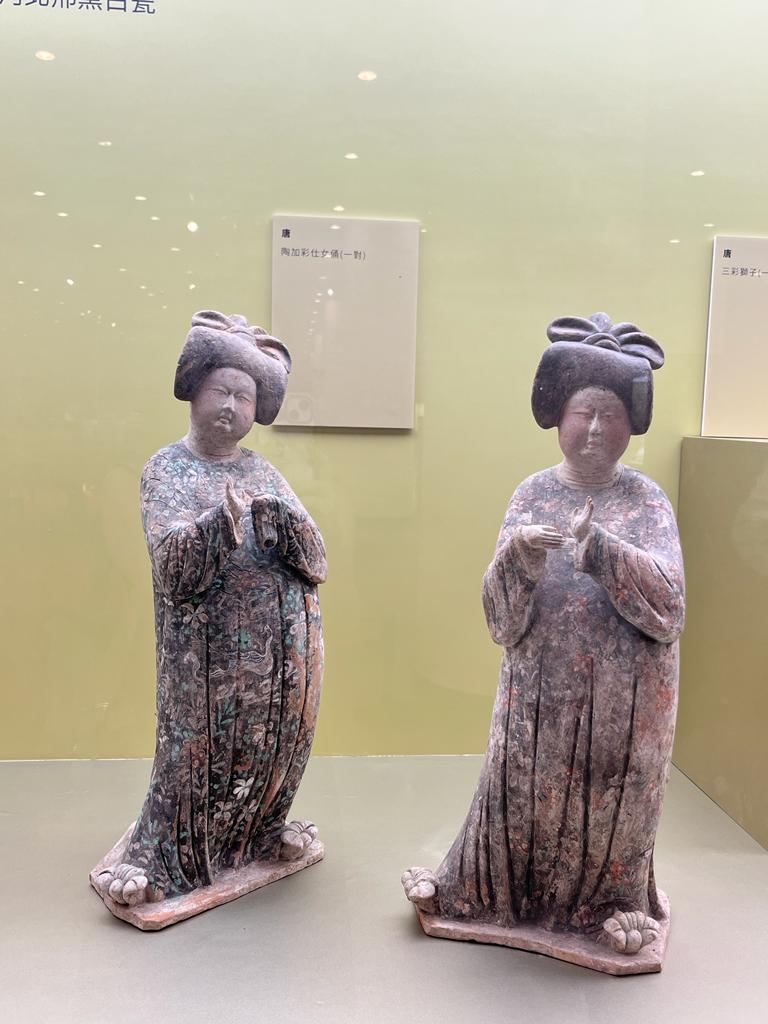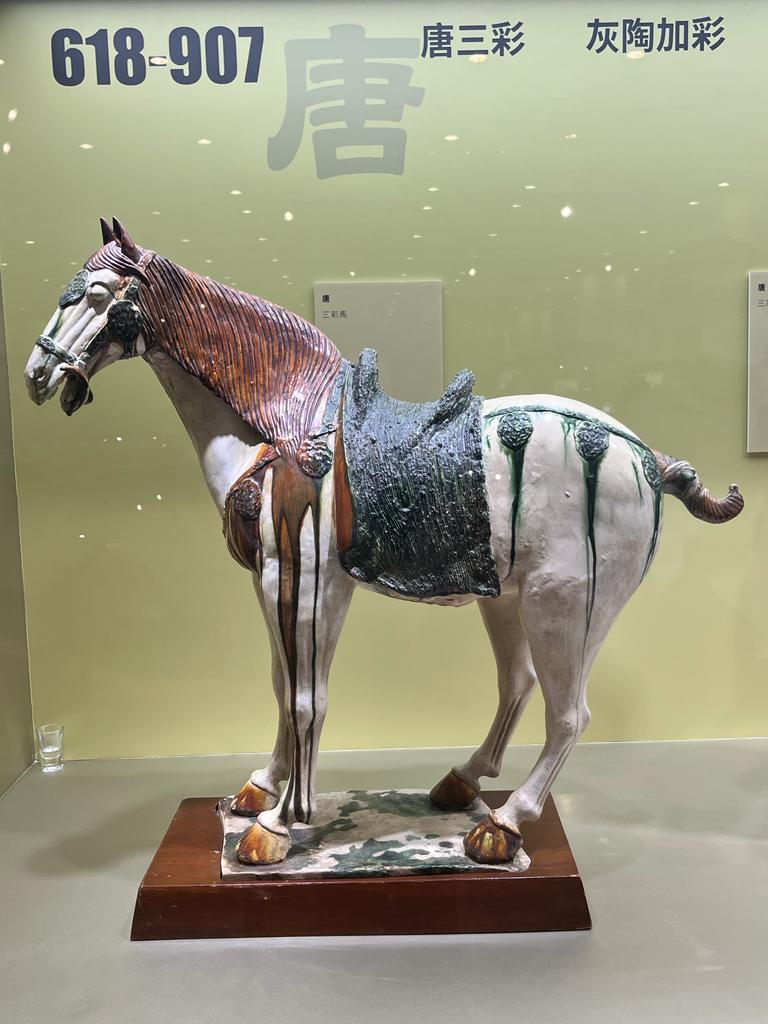IN 1928, RAILWAY WORKERS were digging deep into the ground in Luoyang during the construction of the Longhai railway (隴海鐵路). They uncovered a large Tang Dynasty tomb, more than ten centuries old. The diggers unearthed a large number of pottery items. Many were delicate figurines, with unusual colors: mostly creams, browns and greens.

There were figures of female dancers, camels carrying bolts of silk or musicians on their backs, and powerful horses decorated with ornate saddles.
But close examination revealed some surprises.

First, they showed that the fashion for women in those ancient times was to enlarge and extend the eyebrows with pencil until they almost touched in the middle of the face, in what was virtually a “unibrow”. This was clearly a Tang Dynasty fashion, in which the female face was decorated in unusual ways – more on that below.
BLUE OR GREEN EYES
Second, the figurines of the musicians were interesting, as they clearly did not look like figures from China’s Central Plain. Their faces were different, and some had dark blue or green eyes, long straight noses, and moustaches. Some wore coiled turbans on their heads. Clearly they came from the Western Regions, the area now known as Middle Asia.

The items of pottery could not speak, but they told a story of a golden age when people and goods travelled along the Silk Road.
REDISCOVERY
This was the rediscovery of an historical type of pottery known today as the Tang Sancai (唐三彩). The first part of the name indicates that they came from the Tang Dynasty (618 to 907 AD) and the second word refers to the three main colors used.
When samples reached the west, English-speakers nicknamed the items “egg and spinach” pottery because of the characteristic colors.
Sancai goods were probably mainly used as burial items, in the belief that the people, camels, horses and goods represented in pottery would be available for use by the deceased in the afterlife or the next life.

At a recent exhibition in Hong Kong many examples of these colorful pottery figures and horses were put on display. They shone with a metallic lustre under the warm light due to the durable glaze in brown, green or off-white colors.
WOMEN POWER
The earliest and biggest collection of sancai items was found in Luoyang (洛陽) in modern-day Henan Province. This was the capital of the country during the period when Empress Wu Zetian took power.
Her reign, which interrupted the Tang Dynasty, was called the Zhou Dynasty and ran from 690 to 705. In that period, women enjoyed the highest power, privileges and freedom. Looking at the sancai figurines of women, we see that the outfits and makeup used in that period seemed to be the inspiration for the design of the female figures.
Women had many hairstyle choices, but one called the “two-hearts-bun” can be considered the most representative style. Every morning, the servant would comb the lady’s hair into two strands, pull them into the shape of two hearts intersecting, and tie them at the top of her head.

The appearance of the faces were striking, too. The most popular eyebrow style was a “unibrow” look – the two eyebrows were extended by pencilling to draw as near as possible to each other.
White powder was applied to the fact and rosy blushers were added from their cheeks to the skin around their eyes, as if they were slightly drunk.
Colorful petals or shiny shell fragments were sometimes affixed to their rosy cheeks, making the whole face like a blossom.
MAKING SANCAI
Sancai was lead-glazed earthenware, needing two firings at different temperatures. Craftsmen usually chose kaolin and firing clay as their raw materials. They first put the clay into moulds of various shapes, and they used their carving skills to add detail.

The first firing would be at 1,000 to 1,100 degrees Celsius. After cooling, the three colors were added. Then, to make the colors long-lasting and glossy, a secondary firing at 850 to 950 degrees Celsius was a must.
BACK IN FASHION
As Chinese people rediscover their pride in their long and complex history, some women are experiment with the make-up and fashion styles of ancient periods. While the unibrow has not yet come back into fashion, some people – like the video influencer in the image below and in our main picture at the top – recreating the make-up styles from the Tang Dynasty.

Image at the top is a montage showing a classic Tang Dynasty made-up face and the attempt to recreate it by a modern day influencer in China: click here for the link.
